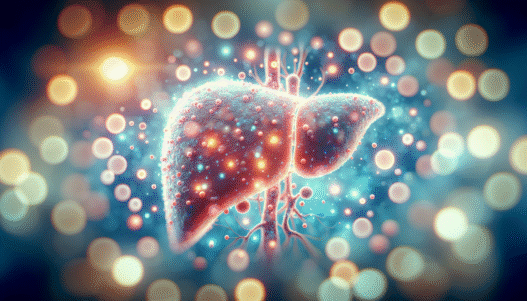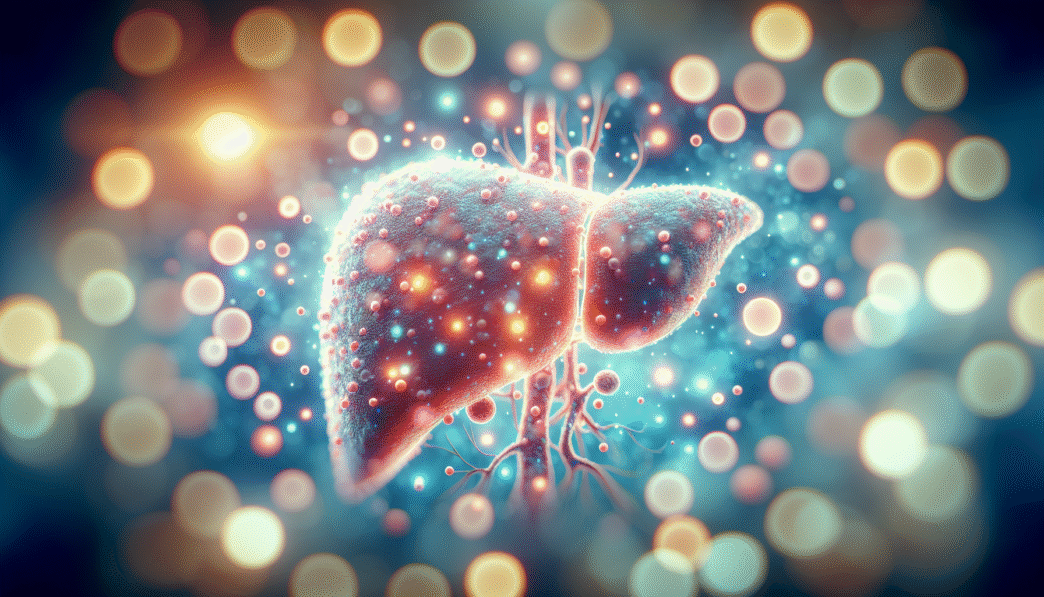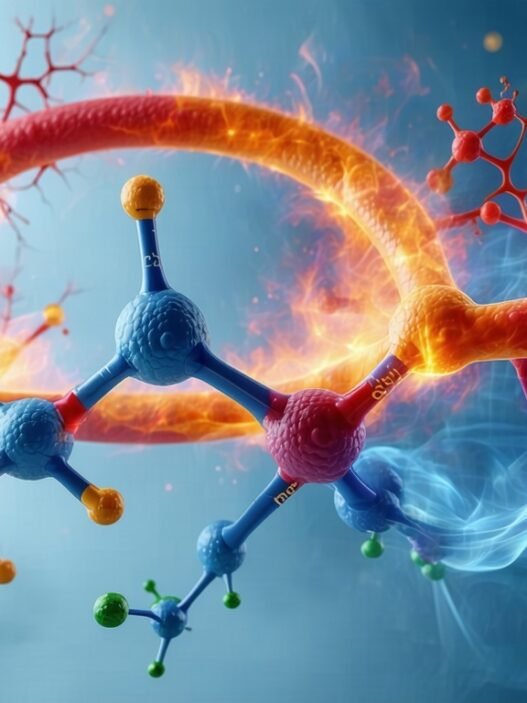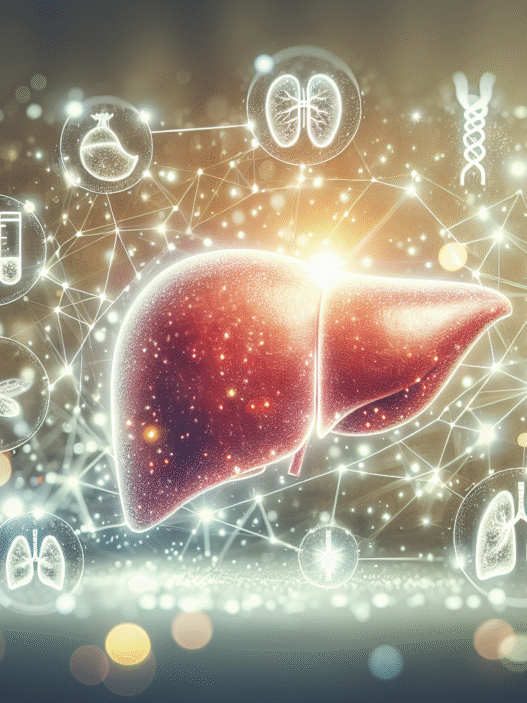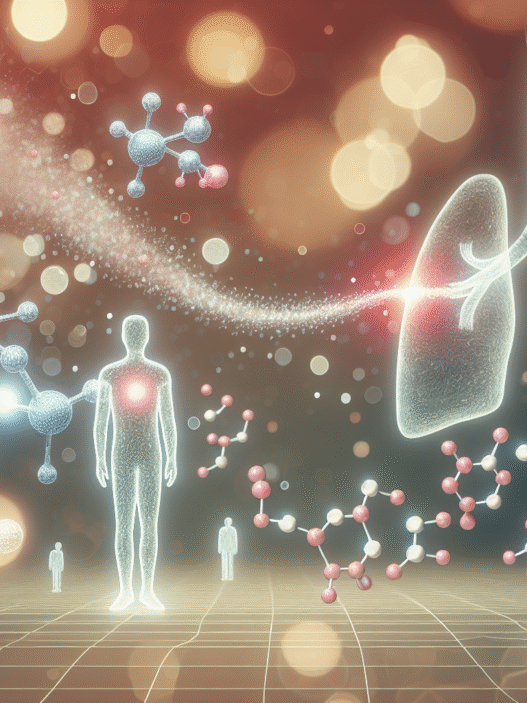Understanding N-Acetyl Cysteine (NAC)
Introduction to NAC
N-Acetyl Cysteine (NAC) is a powerful antioxidant and a derivative of the amino acid cysteine. It is widely recognized for its role as a supplement that supports liver health, detoxification, and various other bodily functions. In recent years, interest has grown around NAC for its potential benefits in reversing fatty liver disease. Additionally, NAC is used in clinical settings to treat acetaminophen overdose and improve respiratory conditions by thinning mucus.
Mechanism of Action
The effectiveness of NAC in managing liver health is attributed to its multifaceted mechanisms of action. NAC acts primarily through the following processes:
-
Antioxidant Activity: NAC replenishes glutathione, a critical antioxidant in the body that neutralizes harmful reactive oxygen species (ROS). Higher levels of glutathione contribute to reduced oxidative stress in the liver, which is crucial for protecting liver cells from damage.
-
Mitochondrial Function Preservation: Research indicates that NAC plays a vital role in preserving mitochondrial health. It inhibits excessive mitophagy, promotes mitochondrial biogenesis, and helps maintain mitochondrial homeostasis, thereby preventing ROS production.
-
Reducing Triglyceride Accumulation: NAC has been shown to reduce triglyceride levels in the liver, which is essential for reversing fatty liver. It achieves this by maintaining key proteins involved in lipid metabolism, thus addressing conditions like Nonalcoholic Fatty Liver Disease (NAFLD) (Frontiers in Pharmacology).
| Mechanism | Description |
|---|---|
| Antioxidant Activity | Replenishes glutathione to reduce oxidative stress |
| Mitochondrial Preservation | Promotes mitochondrial biogenesis and inhibits excessive mitophagy |
| Triglyceride Reduction | Lowers intracellular triglyceride levels through improved lipid metabolism |
NAC’s ability to support liver detoxification and overall health has made it a focus of interest for those wondering, “can NAC reverse fatty liver?” As research progresses, it indicates promising results for NAC’s efficacy in managing fatty liver conditions and enhancing liver function. For more detailed information on the health benefits of NAC, please visit our article on what is NAC N-Acetyl Cysteine used for?.
NAC for Liver Health
N-Acetyl Cysteine (NAC) has gained attention for its potential benefits in promoting liver health, especially in the context of liver steatosis and overall liver function.
Effect on Liver Steatosis
Liver steatosis, often seen in conditions like Non-Alcoholic Fatty Liver Disease (NAFLD), involves the accumulation of excess fat in liver cells. A study indicates that following a long-term high-fat diet, administration of NAC resulted in a noticeable reduction in liver steatosis and cellular apoptosis caused by the high-fat intake (Lipids in Health and Disease).
NAC can help prevent high-fat diet-induced NAFLD by reducing hepatic triglyceride accumulation and lipid droplet formation. These effects suggest that NAC has potential as an effective treatment for combating liver fat accumulation.
| Study | Findings |
|---|---|
| Long-term High-Fat Diet | Significant liver steatosis induced; daily NAC treatment reduced steatosis. |
| NAC Treatment | Ameliorated hepatic steatosis, preventing lipid droplet formation. |
| Serum Triglycerides | NAC treatment reduced hepatic triglycerides, aiding in fat metabolism. |
Improving Liver Function
In addition to its effects on liver fat, NAC is believed to enhance liver function. Research has demonstrated that NAC led to significant decreases in serum alanine aminotransferase (ALT) levels, a common marker of liver damage. After three months of NAC therapy, improvements were observed in liver function independent of initial steatosis grades.
These findings suggest that NAC treatment may normalize liver function parameters, offering potential benefits for individuals dealing with metabolic disorders associated with liver diseases. In animal studies, NAC not only reduced liver fat but also positively influenced markers related to liver health, emphasizing its comprehensive effects on liver health and function (Frontiers in Pharmacology).
For those considering NAC as part of their liver health regimen, it is essential to consult healthcare professionals to determine the right dosage and evaluate potential interactions with other medications. To learn more about the uses and dosage, refer to our article on what is nac n-acetyl cysteine used for?.
NAC for Non-Alcoholic Fatty Liver Disease (NAFLD)
N-Acetyl Cysteine (NAC) has shown significant promise in treating Non-Alcoholic Fatty Liver Disease (NAFLD), a condition characterized by excess fat accumulation in the liver. This section discusses the treatment results from NAC and its benefits for NAFLD patients.
Treatment and Results
Research indicates that NAC is effective in treating NAFLD. One study found that NAC led to a significant decrease in serum alanine aminotransferase (ALT) levels after three months of treatment, which is an important marker of liver function (NCBI). Furthermore, NAC has been shown to ameliorate hepatic steatosis and hyperlipidemia, significantly reducing both serum and hepatic triglyceride levels.
The results from a study on a high-fat-diet-induced NAFLD mouse model highlighted that NAC treatment not only lowered triglyceride accumulation but also improved liver health by preserving mitochondrial function and preventing excessive production of reactive oxygen species (ROS).
| Treatment Duration | ALT Decrease | Triglyceride Levels Reduction |
|---|---|---|
| 3 months | Significant | Significant |
NAC’s role in reducing lipid droplet formation further supports its efficacy as a treatment for NAFLD.
Benefits for NAFLD Patients
Patients diagnosed with NAFLD may gain several benefits from NAC treatment. Firstly, by lowering ALT levels, NAC helps improve liver function, which is vital for overall health. The reduction in serum triglycerides can also help alleviate symptoms associated with fatty liver disease, such as fatigue and discomfort.
NAC’s ability to preserve mitochondrial function is particularly crucial. Mitochondria are responsible for energy production within the liver, and their dysfunction is commonly linked to NAFLD. By preserving these organelles, NAC may enhance the liver’s ability to metabolize fats effectively, thus reducing the risk of fatty liver progression (PubMed Central).
Moreover, the antioxidant properties of NAC contribute to a decrease in oxidative stress, which is a significant factor in the development and progression of liver diseases. This action can protect liver cells from damage and support overall liver health, indicating the potential of NAC as a valuable supplement for individuals concerned about liver health and detoxification.
In conclusion, NAC presents a promising option for those dealing with NAFLD, showcasing its potential not just in reversing fatty liver but also in enhancing liver function and promoting overall wellness. For further insights into NAC, visit our page on what is NAC and what is it used for?.
Additional Health Benefits of NAC
Balancing Blood Sugar
NAC may assist in balancing blood sugar levels, particularly in individuals with insulin resistance. This is especially relevant for those dealing with conditions such as polycystic ovary syndrome (PCOS). Research indicates that NAC may enhance insulin sensitivity, which is beneficial for maintaining stable blood sugar levels. However, studies have shown limited evidence that NAC significantly helps those with type 2 diabetes achieve better blood sugar control.
| Condition | NAC Effect on Blood Sugar |
|---|---|
| Insulin Resistance | May enhance insulin sensitivity |
| Polycystic Ovary Syndrome | Potential improvement in blood sugar balance |
| Type 2 Diabetes | Limited evidence of improvement |
Supporting Brain Health
Another significant benefit of NAC is its potential in supporting brain health. NAC contributes to replenishing glutathione levels, a crucial antioxidant, and helps control neurotransmitter levels. This can reduce inflammation and combat oxidative stress, thereby protecting brain cells. Such functions may offer benefits for individuals with neurodegenerative diseases, such as Alzheimer’s and Parkinson’s.
| Brain Health Benefit | NAC Mechanism |
|---|---|
| Antioxidant Support | Replenishes glutathione |
| Neurotransmitter Control | Regulates neurotransmitter levels |
| Inflammation Reduction | Reduces oxidative stress |
NAC’s multifaceted roles in supporting overall health—ranging from boosting liver function to potentially aiding in effective detoxification—make it a compound of interest for individuals focusing on health and longevity. For more information on its uses, refer to our article on what is nac n-acetyl cysteine used for?.
NAC and Mitochondrial Function
N-Acetyl Cysteine (NAC) has garnered attention for its potential benefits on mitochondrial health. This section discusses how NAC preserves mitochondria and inhibits reactive oxygen species (ROS) production.
Preserving Mitochondria
NAC plays a significant role in maintaining mitochondrial function. Research suggests that NAC can preserve mitochondria by inhibiting excessive mitophagy, the process of degrading damaged mitochondria, and promoting mitochondrial biogenesis, or the creation of new mitochondria. This is particularly relevant for individuals suffering from Non-Alcoholic Fatty Liver Disease (NAFLD), where mitochondrial dysfunction is often a contributing factor.
By supporting healthier mitochondrial function, NAC may help to mitigate some of the challenges posed by conditions such as NAFLD. Furthermore, its capacity to preserve mitochondria aids in reducing intracellular triglyceride accumulation, which is beneficial given that high lipid levels can exacerbate liver conditions.
| Benefit of NAC on Mitochondria | Description |
|---|---|
| Inhibits Excessive Mitophagy | Helps retain functioning mitochondria |
| Promotes Mitochondrial Biogenesis | Stimulates production of new mitochondria |
| Reduces Triglyceride Accumulation | Lowers fat buildup in liver cells |
Inhibiting ROS Production
In addition to preserving mitochondrial health, NAC serves as a powerful antioxidant that inhibits reactive oxygen species (ROS) production. ROS are byproducts of cellular metabolism that can cause oxidative stress, leading to cellular damage and contributing to various health issues, including liver diseases.
Studies indicate that NAC’s antioxidative properties can significantly lower oxidative stress, thereby improving mitochondrial function. The ability of NAC to reduce ROS levels is linked to its role in treating liver-related conditions such as NAFLD, highlighting its potential as an effective treatment option (PubMed Central).
| Mechanism | Effect |
|---|---|
| Antioxidant Activity | Neutralizes harmful ROS |
| Reduces Oxidative Stress | Protects cells from damage |
Through these mechanisms—preserving mitochondria and inhibiting ROS production—NAC plays a pivotal role in promoting liver health and potentially reversing conditions like fatty liver disease. For more information about NAC and its uses, see our article on what is nac n-acetyl cysteine used for?.
NAC as a Potential Treatment
Mitigating Metabolic Disorders
N-Acetyl Cysteine (NAC) has demonstrated promise in addressing various metabolic disorders, particularly those related to liver health. Research indicates that NAC can preserve mitochondrial function, significantly impacting conditions associated with Non-Alcoholic Fatty Liver Disease (NAFLD). It achieves this by inhibiting excessive mitophagy and promoting mitochondrial biogenesis, ensuring a balance that creates a healthy mitochondrial environment. The prevention of excessive reactive oxygen species (ROS) production is crucial, as ROS are linked to the progression of metabolic issues.
The Sirtuin 1 (Sirt1)/PGC1α signaling pathway plays a vital role in this process. NAC’s influence on this pathway aids in balancing cellular energy and overall metabolic function, thereby potentially mitigating the risks associated with metabolic disorders. This function positions NAC as an effective candidate for therapeutic approaches aimed at managing metabolic conditions.
Reducing Triglyceride Accumulation
One of the significant aspects of NAC is its ability to reduce triglyceride accumulation in the liver. Excess triglyceride buildup is a hallmark of fatty liver disease and poses various health risks. NAC treatment has been shown to inhibit excessive mitophagy that is often induced by high-fat diets, thus contributing to the maintenance of healthy mitochondrial function. This process not only helps in managing triglycerides but also promotes overall liver health.
In essence, NAC serves as a potential treatment for fatty liver conditions by addressing both mitochondrial integrity and triglyceride levels. By preventing the accumulation of harmful metabolites in the liver, NAC may effectively support liver detoxification and enhance longevity. For those exploring the potential of NAC in liver support, understanding its influence on metabolic health is essential. For further insights into its benefits, you may find our article on is NAC good for your liver? informative.










